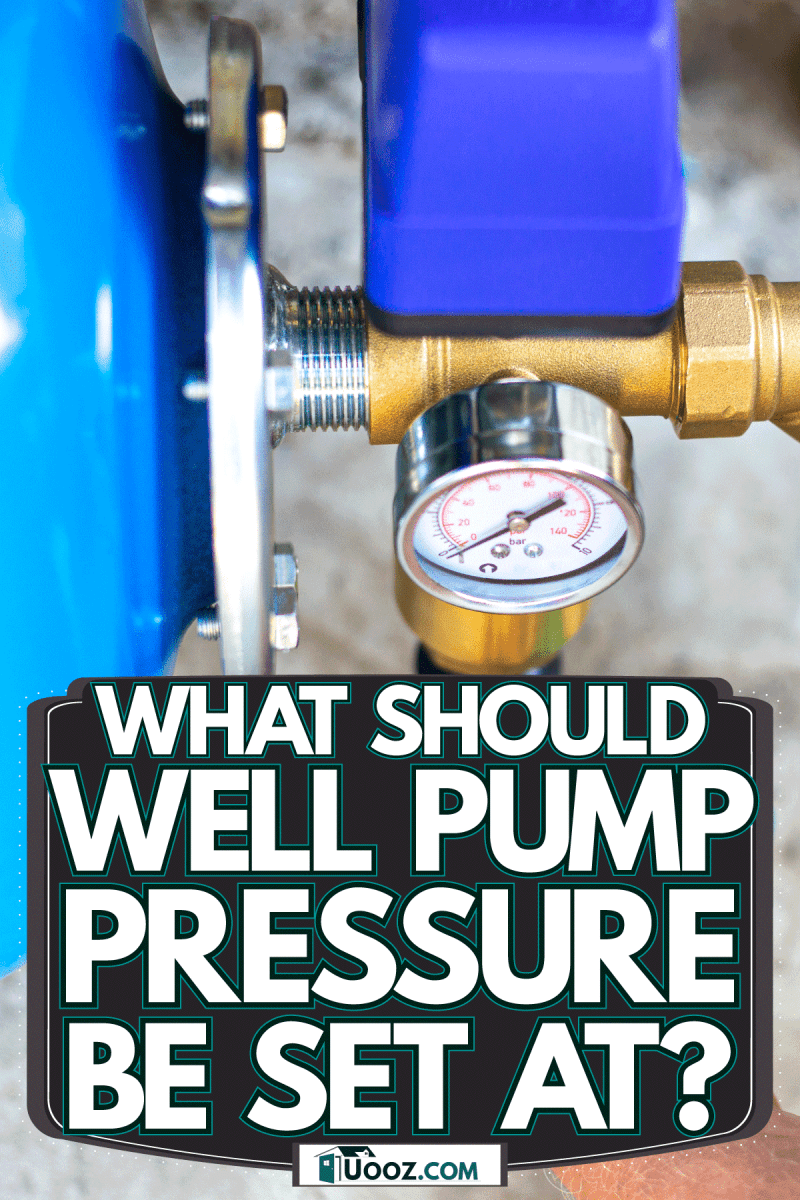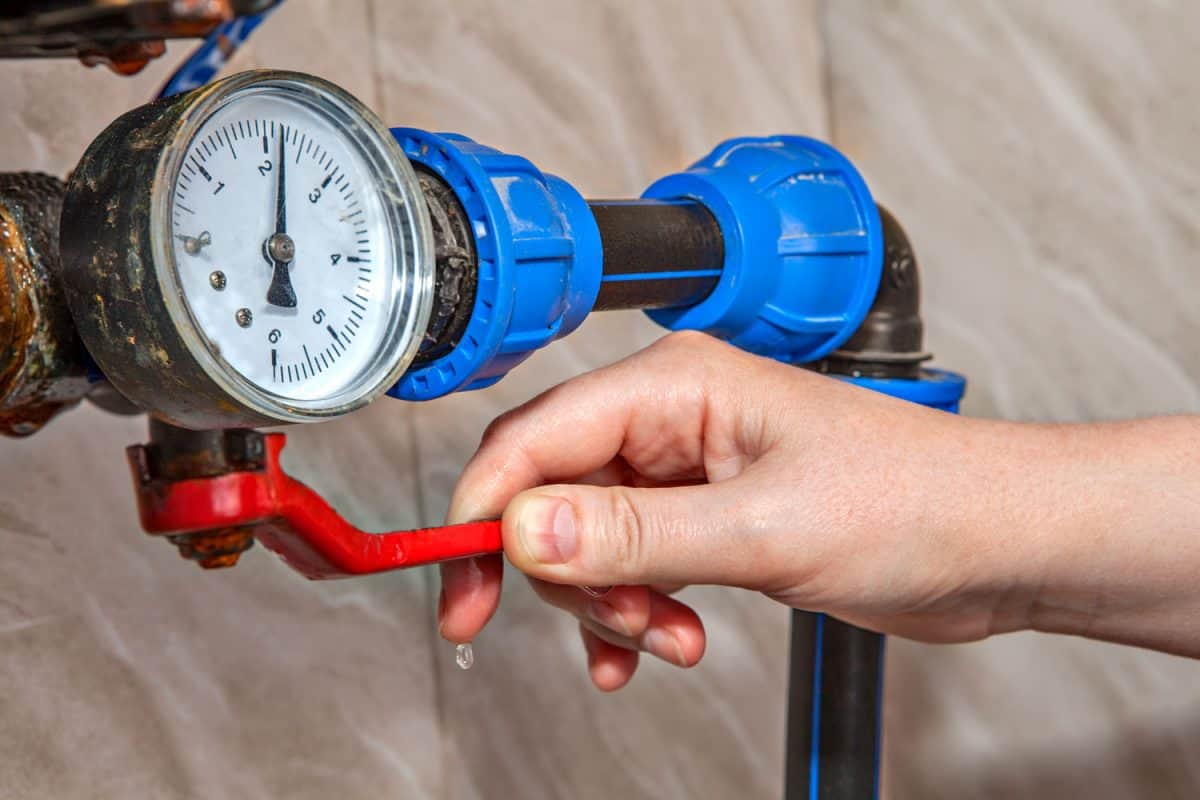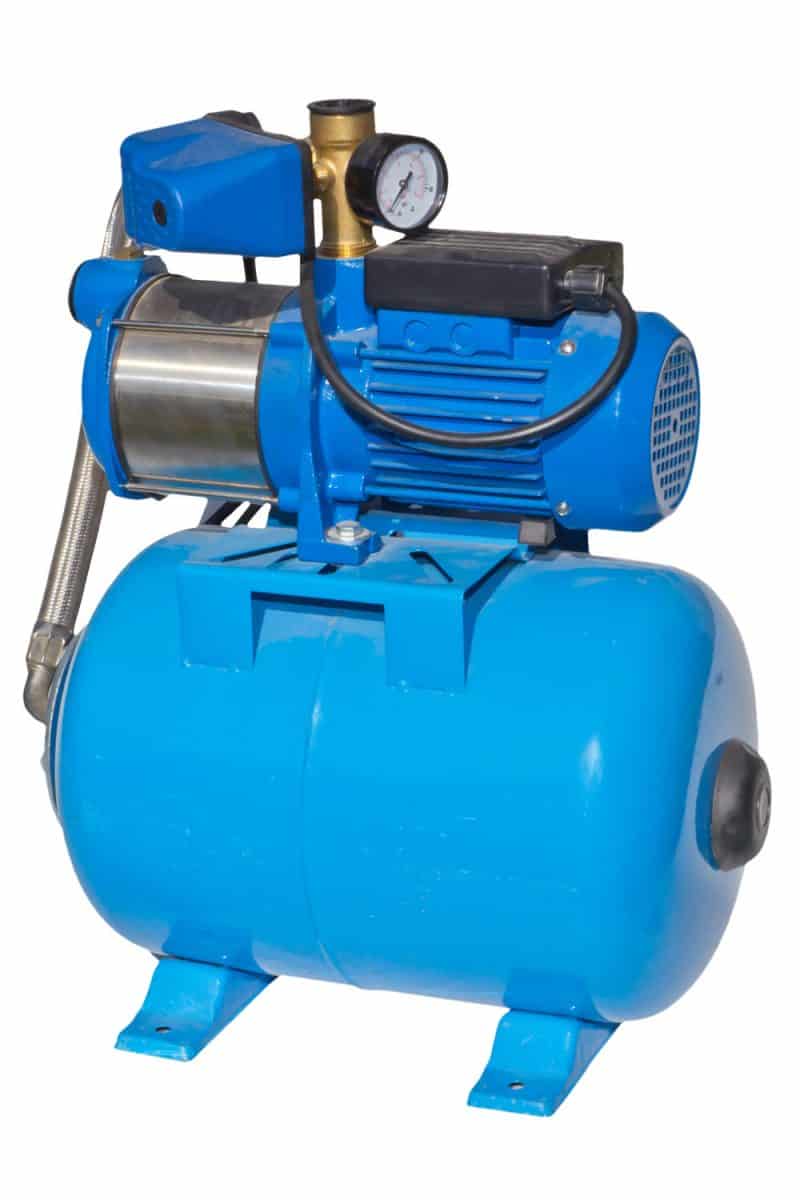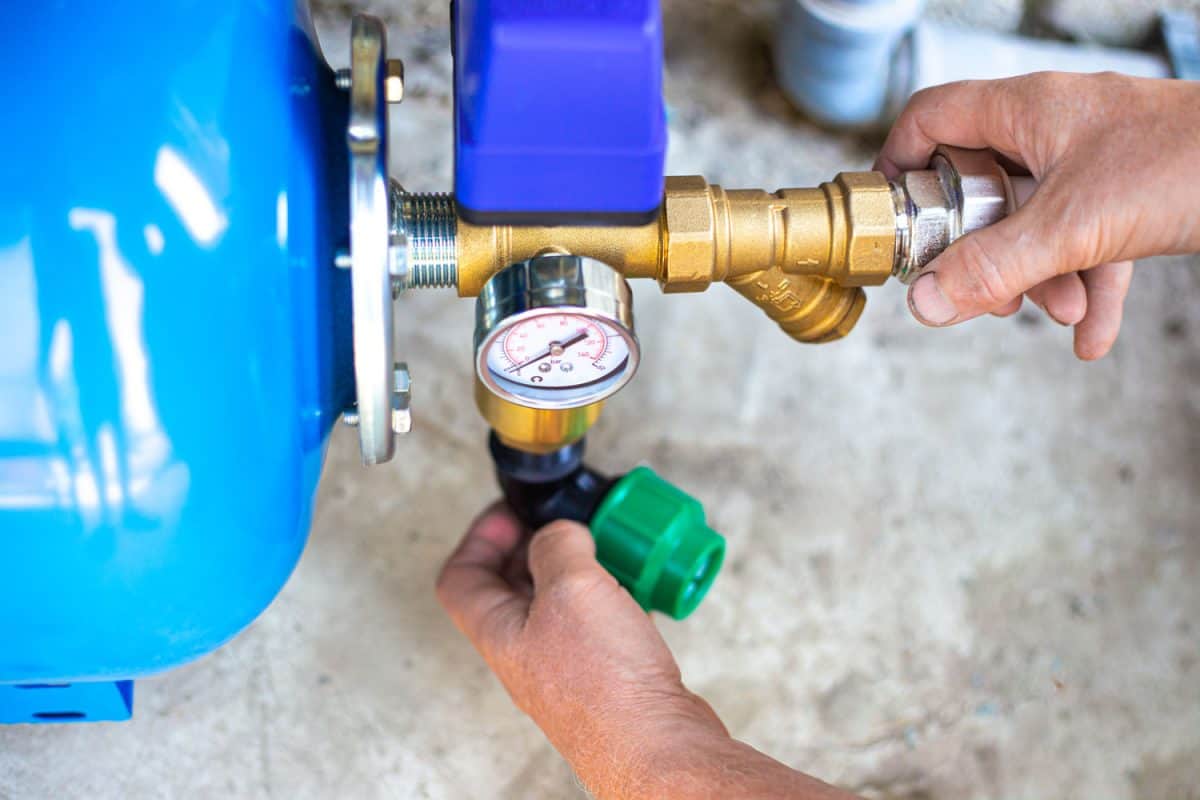Are you troubleshooting your well pump or installing a new system? A common question we get asked is what the pump pressure should be set at. This is an important aspect, and you don't want to experience too little water pressure. We set out to find the best answer for this question, reading through top sources. You can see our findings below.
For proper functioning, a well pump should be set at a pressure between 40 and 60 PSI. You can adjust this number via the pressure switch on the tank. However, it's important to note that you will need to adjust the air charge accordingly if you change the pressure on the tank.
You still have a lot to learn about your well pump. Read along as we discuss adjusting the pressure, how long it should take for your pump to build pressure, causes of low water pressure, and more.

Ideal Well Pump Pressure Setting
Well pump pressure should be set between 40 and 60 PSI. If your pump is set correctly but you are still experiencing low water pressure, there are likely some underlying causes. However, if you notice that your pressure reading is not correct, you can change the PSI by adjusting the pressure switch on the tank manifold.

How do You Increase Water Pressure on a Well System?
When increasing the water pressure on a well system, you must adjust both the air charge and the tank pressure. First, you will need to know the current PSI of the tank. Before you can read the gauge, you'll need to turn on a faucet until the pump kicks on. You will then be able to see the pressure reading.

If you discover that your pressure needs to be increased, locate the box next to your gauge. Upon removing the cover, you will see two switches. One increases the pressure, while the other decreases it. Now that you have the desired pressure at the pump, it's time to adjust the air charge.
How to Adjust the Air Charge
Although adjusting the air charge is not as simple as increasing the tank pressure, it is not complicated. As with the pump pressure, you must check the air charge before adjusting it. Turn off all power to the pump. You will need a hose to drain the water from the tank. After all the water has been dispelled, you can get an accurate reading.
Locate the valve stem on top of the tank, and remove the cover. The process of adding and removing air along with checking the charge is the same as checking and adjusting the air in your car tires. Using a tire gauge, hold it over the valve stem, pressing firmly until you get a reading.
This reading should be two PSI less than that of the pump. When adding air to the charge, you will utilize an air compressor. Hold the compressor hose over the valve stem, adding air until it reaches the appropriate level. If you have too much of an air charge, release pressure by pressing the knob of the tire gauge into the valve until you hear air seeping out.
Check out portable air compressors on Amazon.
For a visual guide, watch this YouTube video:
How Long Does it Take for A Well Pump to Build Pressure?
If you have an average-sized tank, you should only have to wait approximately 30 seconds to 2 minutes for it to build pressure. If you have a relatively large tank, however, it could take up to 3 minutes. However, consider that larger tanks relieve stress from the water pump. The more water your tank holds, the less often your pump has to cycle, resulting in a longer life span.
Why is My Well Pump Slow to Build Pressure?
If your pump is taking longer than 3 minutes to build pressure, there are a few things that could be wrong:
- Sludge and sediment
- Malfunctioning impeller
- Leaky pipes
Sludge and Sediment
Just like your sink drains become clogged, so can your well pump. According to Mr. Rooter, sediment and sludge from the water source can clog your pipes and filter. This can make your pump work harder to build pressure. Routine maintenance can help you avoid this and other problems.
Malfunctioning Impeller
The impeller is one of the most important components of your water well. This little gadget is responsible for pulling water from the well and depositing it into your tank. As with other components, the impeller can become clogged. It can also wear out sooner than expected if your water tank is not large enough to support your well pump.
When issues with the impeller arise, you will usually hear a change in the way your pump sounds. It may become louder and sound a bit whiny.
Leaky Pipes
When your pump takes too long to build pressure, it could be a sign of a leak in your pipes. This may also be the case if the pump builds pressure properly or improperly but then loses it completely. Check for excess water on the ground beneath your pipes. As always, routine maintenance is the key to keeping minor problems from turning into major issues.
What Could Cause a Well to Lose Pressure?
Several factors could cause your well to lose pressure, but you will find a few of the most common below:
Faulty Pressure Switch
The pressure switch is a key component in your well system. It regulates the PSI, keeping your water pressure at a desirable level. However, if the pressure switch malfunctions, it will cease this regulation, causing your pump to not maintain its water pressure. Luckily, replacing a faulty pressure switch is a cheap and simple fix.
Amazon has a variety of replacement switches.
Improper Air Charge
Earlier, we discussed checking and adjusting your tank's air charge. Your tank pressure should be set between 40 and 60 PSI with an air charge of two PSI below that reading. Not following this guideline can cause your well to lose pressure. Follow previous guidelines to help you check and adjust the charge.
Can a Dirty Filter Cause Low Water Pressure?

Along with slow pressure buildup, dirty filters can also cause low water pressure. If your well pump features a sediment filter, you should change it roughly once every 6 months. Some areas, however, have lower water quality than others.
If you live in an area with hard water or excessive sediment, you will need to change the filter more often. This will not only help improve your water pressure, but it will also improve your water quality.
Click here to view replacement filters on Amazon.
Is My Tank Large Enough to Support My Pump?
If you don't have a large enough pressure tank, your pump will become overworked. The more water your tank holds, the less your pump has to cycle. However, since pressure tanks consist of both compressed air and water, the tank size is no indication of the amount of water it will hold. Instead, you must look for the drawdown number for this indication.
You can view this pressure tank on Amazon.
If you are a one-person household, you won't use as much water as a family of four. Therefore, your tank size should reflect the amount of water you will be consuming. The following YouTube video gives an excellent explanation of how to size your water tank:
How Often Should My Well Pump Cycle?
As stated above, your tank should be large enough to take some of the workloads away from your pump. The less your pump cycles, the longer it will last. However, that leaves us with a question: How often should my well pump cycle?
While we know that too much cycling is bad, there is not a set number of cycles that your pump should be making. It will depend on multiple aspects, such as the size of your tank and how often you run your water. You can start by noting how many times your pump cycles throughout the day.
Do this for a week or two. Jot down whether or not you were using the water when the pump kicked on.
Use those notes for future reference; if you begin to notice the pump running more often than usual, you'll know that something isn't right with your system. If it seems like your pump is working overtime, you may benefit from calling a plumber to come to take a look at your setup. He may be able to suggest ways to take some of the stress off your pump.
In Closing

The pressure at which your well pump is set is important for your well system. Always make sure your air charge is two PSI below that of the tank pressure. If either of these ranges is incorrect, you can easily adjust them by following the guidelines mentioned above.
For additional information regarding your well pump, check out these other helpful posts on our blog:
Can You Run A Well Pump Without A Pressure Tank?




